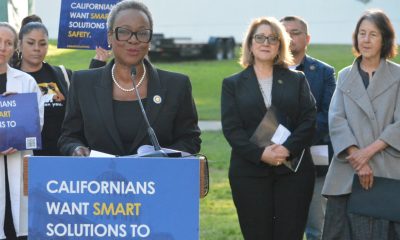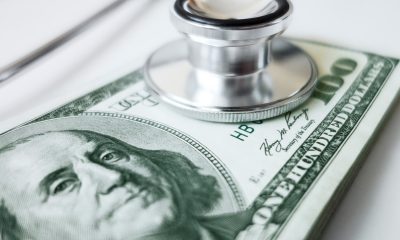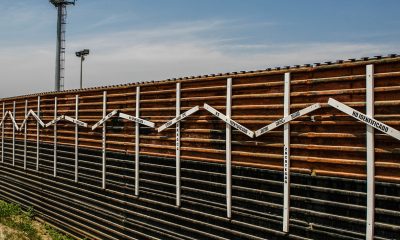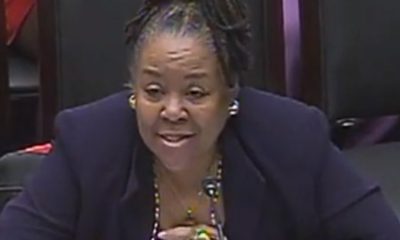Health
Diversity in dental profession brings better care for minorities
SOUTH FLORIDA TIMES — When it comes to having access to quality health care, minorities still lag behind their white counterparts, research shows, and that can include dental and orthodontic problems that get postponed or go untreated. “This is a huge problem because regular checkups and care are critical to keeping your teeth and gums healthy,” Bobbi Peterson an orthodontist who is an African-American.
By Terry Stanton
When it comes to having access to quality health care, minorities still lag behind their white counterparts, research shows, and that can include dental and orthodontic problems that get postponed or go untreated.
“This is a huge problem because regular checkups and care are critical to keeping your teeth and gums healthy,” Bobbi Peterson an orthodontist who is an African-American.
One contributing factor to the limited care for minorities is a lack of diversity in the medical profession. Studies have shown that minority patients are more likely to visit medical professionals who also are minorities, but diversity among dentists does not mirror the overall population at all, according to the American Dental Association. In a 2015 study, for example, just 3.8 percent of dentists were black, while the nation’s overall black population was 12.4 percent.
Meanwhile, just 5.2 percent of dentists were Hispanic, compared to 17.7 percent of the overall population.
For many people, this does matter, and says Dr. there’s even a mobile app and website called Hued that tries to match patients with black and Latino doctors.
“Of course, for many people there might not be any medical providers whose offices are that close to them,” Peterson says. “Even in a place as large as Brooklyn, I’m one of only three black-female orthodontists with their own office.”
The lack of care for minorities has been a concern for years, and some of the issues that have been raised include:
• Minorities have more oral-health problems. African-Americans and Hispanics have significantly greater rates of untreated cavities than non-Hispanic whites, according to data from the Centers for Disease Control and Prevention. African Americans and Hispanics also have disproportionate rates of tooth loss, the CDC reports. Would those statistics be different if the patients had access to a dentist or orthodontist who was a minority? Perhaps, though other factors could play a role, such as the cost of dental care. Still, in 2015 psychiatrist Damon Tweedy wrote in a New York Times guest column that black patients are more likely to feel comfortable with black doctors, and studies have shown they are more likely to seek them out for treatment.
• Trust can be an issue. In that same column, Tweedy wrote that, compared to other races, black patients are less trusting of physicians and their medical advice. As a result, they often delay or refuse needed treatments. Peterson says she has seen in her practice how important trust is. In some cases, that may transcend race. “The mouth and the face are two really intimate zones as part of your personal space,” she says. “To allow someone into that personal space patients have to trust them.”
• Reaching out to the community is important. Peterson says it’s important for healthcare providers to reach out to their communities, especially in areas where there are low-income families who can’t always afford care. Peterson often volunteers in community schools to teach students and staff dental health, and to provide free screenings to middle school students.
Peterson says it’s important to put patients at ease when they arrive in the office.
Otherwise, they might not be inclined to return.
“I like to greet them with a smile and give them a detailed description of what their treatment plan should be,” she says. “They need to know what to expect.”
Dr. Bobbi Peterson (www.allthingsdrbobbi.com)
This article originally appeared in the South Florida Times.
Community
Calif. Dept. of Public Health: Got Milk Allergies? Don’t Eat Dave’s Bakery Cornbread
The California Department of Public Health (CDPH) issued a warning on Jan. 26, instructing consumers with milk allergies or “severe sensitivity to milk” in the state to not eat Dave’s Bakery Corn Bread due to “risk of illness.” The CDPH warns that consumption of the corn bread manufactured by a Gardena-based company — with expiration dates up to June 18, 2024 — may lead to “life threatening” reactions.
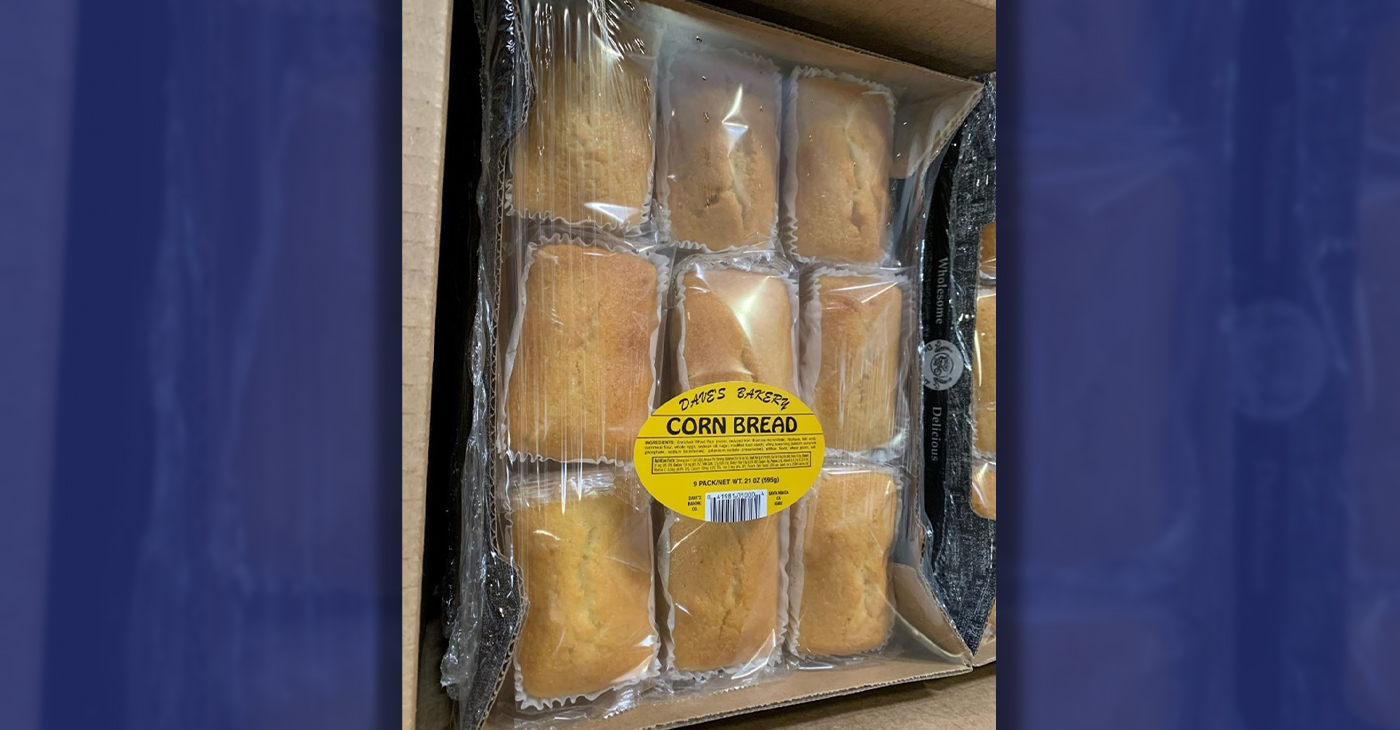
By California Black Media
The California Department of Public Health (CDPH) issued a warning on Jan. 26, instructing consumers with milk allergies or “severe sensitivity to milk” in the state to not eat Dave’s Bakery Corn Bread due to “risk of illness.”
The CDPH warns that consumption of the corn bread manufactured by a Gardena-based company — with expiration dates up to June 18, 2024 — may lead to “life threatening” reactions.
“This warning applies only to the Corn Bread produced by Bake R Us, DBA Dave’s Baking Company and distributed to schools, retail facilities and in vending machines primarily in southern California,” the DCPH statement reads.
“This product should not be confused with other similarly named companies with national distribution,” it continues.
According to the CDPH, although the corn bread product contains whey, which is a milk allergen, there is no allergy warning label on the packaging, though it is required by state law.
So far, authorities say, no illnesses have been reported in the state, but if anyone finds the products on sale anywhere in the state, they should call the CDPH complaint hotline at (800) 495-3232 or file a report online at CDPH.ca.gov
The CDPH is also recommending that people who have eaten the product and are experiencing any reaction or ill effects should consult their health care provider.
Bay Area
East Bay Regional Park District Issues Rattlesnake Advisory
The East Bay Regional Park District released an advisory today on rattlesnakes, which emerge from winter hibernation in early spring and become more active. Warm weather can bring more potential for rattlesnake encounters with humans and dogs, particularly along trails and roads.
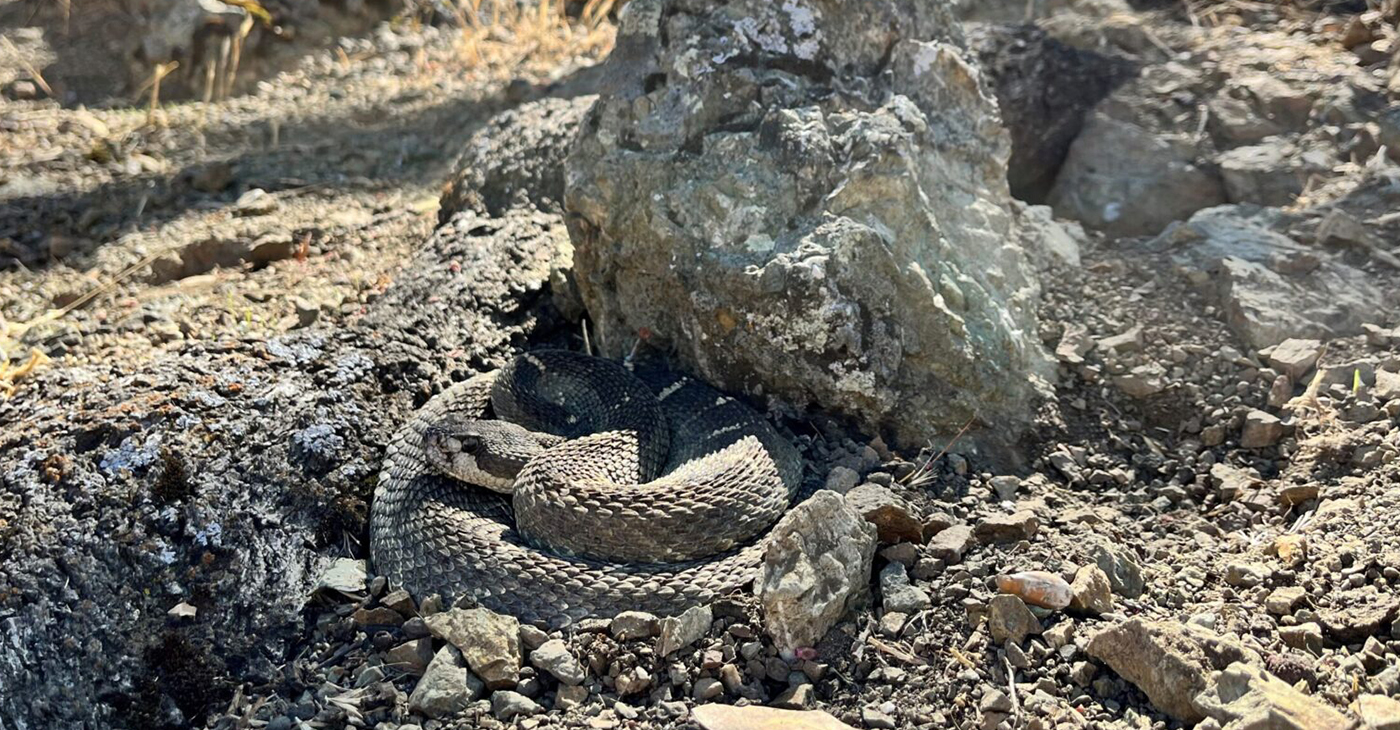
The Richmond Standard
The East Bay Regional Park District released an advisory today on rattlesnakes, which emerge from winter hibernation in early spring and become more active.
Warm weather can bring more potential for rattlesnake encounters with humans and dogs, particularly along trails and roads.
Visitors are encouraged to avoid hiking alone in case of an emergency, to scan the ground ahead as they walk, jog or ride, stay on trails avoiding tall grass, and to look carefully around and under logs and rocks before sitting down. Keep your dog on your leash to be extra safe, park officials said.
If you encounter a rattlesnake, leave it alone – it is unlawful to capture or harm one. Move carefully and slowly away or around it and give it plenty of space, park officials said.
Those who are bitten by a rattlesnake are instructed to stay calm by lying down with the affected limb lower than the heart, then having someone call 911.
Getting medical attention is critical.
Those bitten should not use tourniquets, “sucking,” or snake bite kits. If you are by yourself, walk calmly to the nearest source of help to dial 911, do not run.
If bitten by any other type of snake, wash the wound with soap and water or an antiseptic and seek medical attention.
Not sure what bit you? Check the bite for two puncture marks (in rare cases one) associated with intense, burning pain, which is typical of a rattlesnake bite. Other snakebites can leave marks without associated burning pain.
The Northern Pacific rattlesnake is the species found in East Bay Regional Parks. Snakes are important to the natural environment, helping to control rodents and other reptile populations. But enjoy them from afar.
For more information, download the Park District’s Common Snakes brochure or watch our Gopher Snake or Rattlesnake video to learn how to tell the difference between rattlesnakes and gopher snakes. Additional information is available at ebparks.org/safety/wildlife-encounters.
Alameda County
A Safe Place, Bay Area Domestic Violence Community Organization, Opens New Service Center in Oakland
Oakland-Bay Area non-profit, A Safe Place, announces the grand opening of its newly purchased building in Oakland that will be a service center for families that have suffered from domestic violence. The new, two-story building has over six new service rooms for counseling, mental health support groups, legal services, children’s treatment, safe space for community engagement, and partnership activities.
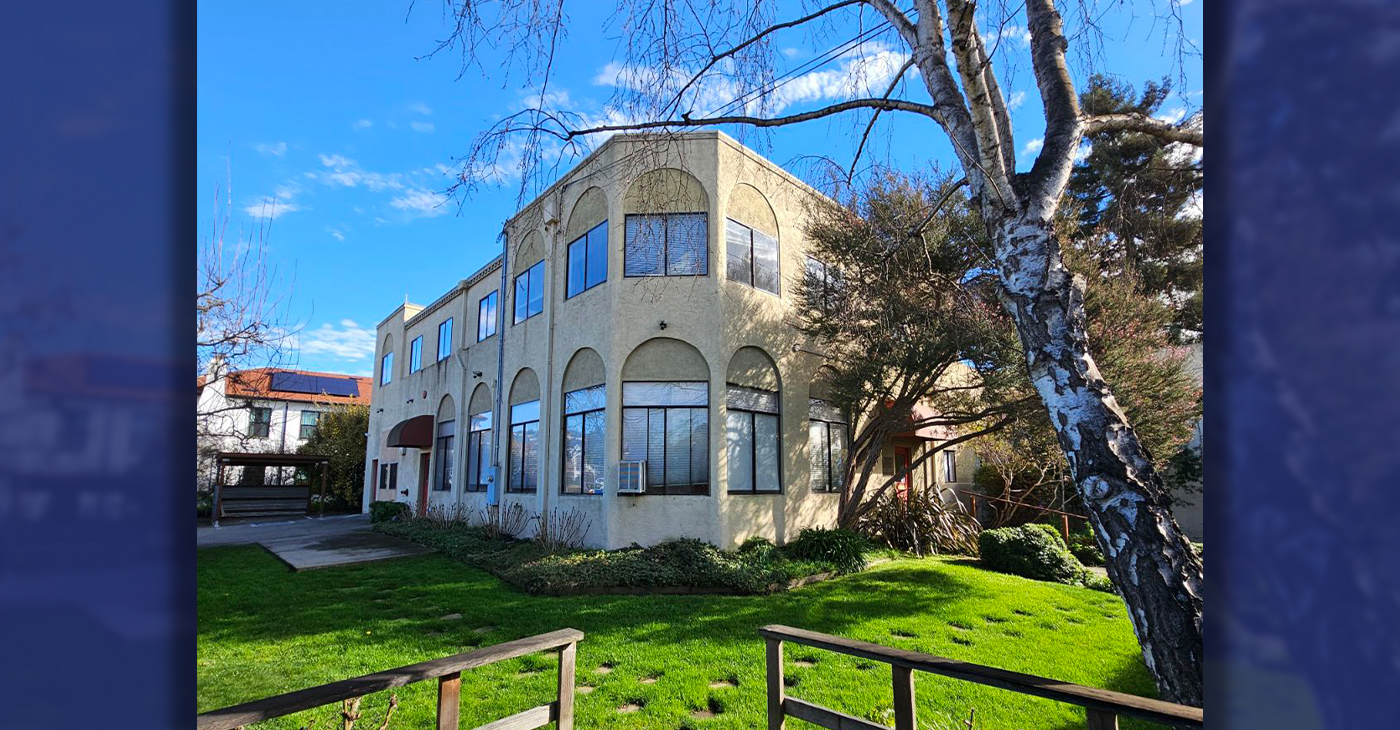
By Courtney Slocum Riley
Special to The Post
Oakland-Bay Area non-profit, A Safe Place, announces the grand opening of its newly purchased building in Oakland that will be a service center for families that have suffered from domestic violence.
The new, two-story building has over six new service rooms for counseling, mental health support groups, legal services, children’s treatment, safe space for community engagement, and partnership activities.
Domestic violence occurrences and offenses account for a considerable amount of all violent crimes in Alameda County. A Safe Place is attempting to provide a safe place for families to heal. A Safe Place is the only comprehensive domestic violence assistance program including a safehouse, in Oakland.
The grand opening celebration will also serve as a fundraiser to build out healing, therapeutic spaces for children and adult victims and survivors and survivors of domestic violence (male and female).
The new service center will expand the work of the organization, founded in 1976 when a group of women working in San Francisco came together to address the urgent need for a shelter in the East Bay. A year later, they founded A Safe Place (ASP) in Oakland. Run solely by volunteers, they set up a crisis line to offer crisis counseling and information to battered women and their children.
The organization serves over 500 adults and children annually through a host of services including crisis counseling via 24-hour crisis line, emergency motel and safehouse sheltering, mental health services (counseling and support groups).
Under the leadership of Executive Director, Carolyn Russell, the organization has grown from a single program into the comprehensive domestic violence and assistance program. ASP strives to meet the growing and diverse needs of our growing community.
The organization hopes to complete all the upgrades and therapeutic room improvements by August 2024. The public is invited to donate to the effort by using the website at www.asafeplace.org/donate. The organization also accepts in-kind gifts as well as items from the organization’s Amazon Wishlist.
-

 Community3 weeks ago
Community3 weeks agoFinancial Assistance Bill for Descendants of Enslaved Persons to Help Them Purchase, Own, or Maintain a Home
-

 Business3 weeks ago
Business3 weeks agoV.P. Kamala Harris: Americans With Criminal Records Will Soon Be Eligible for SBA Loans
-

 Activism3 weeks ago
Activism3 weeks agoOakland Post: Week of April 10 – 16, 2024
-

 Community3 weeks ago
Community3 weeks agoAG Bonta Says Oakland School Leaders Should Comply with State Laws to Avoid ‘Disparate Harm’ When Closing or Merging Schools
-

 Community2 weeks ago
Community2 weeks agoRichmond Nonprofit Helps Ex-Felons Get Back on Their Feet
-

 Community2 weeks ago
Community2 weeks agoOakland WNBA Player to be Inducted Into Hall of Fame
-

 Activism1 week ago
Activism1 week agoOakland Post: Week of April 24 – 30, 2024
-

 Community2 weeks ago
Community2 weeks agoRPAL to Rename Technology Center for Retired Police Captain Arthur Lee Johnson



